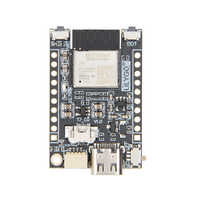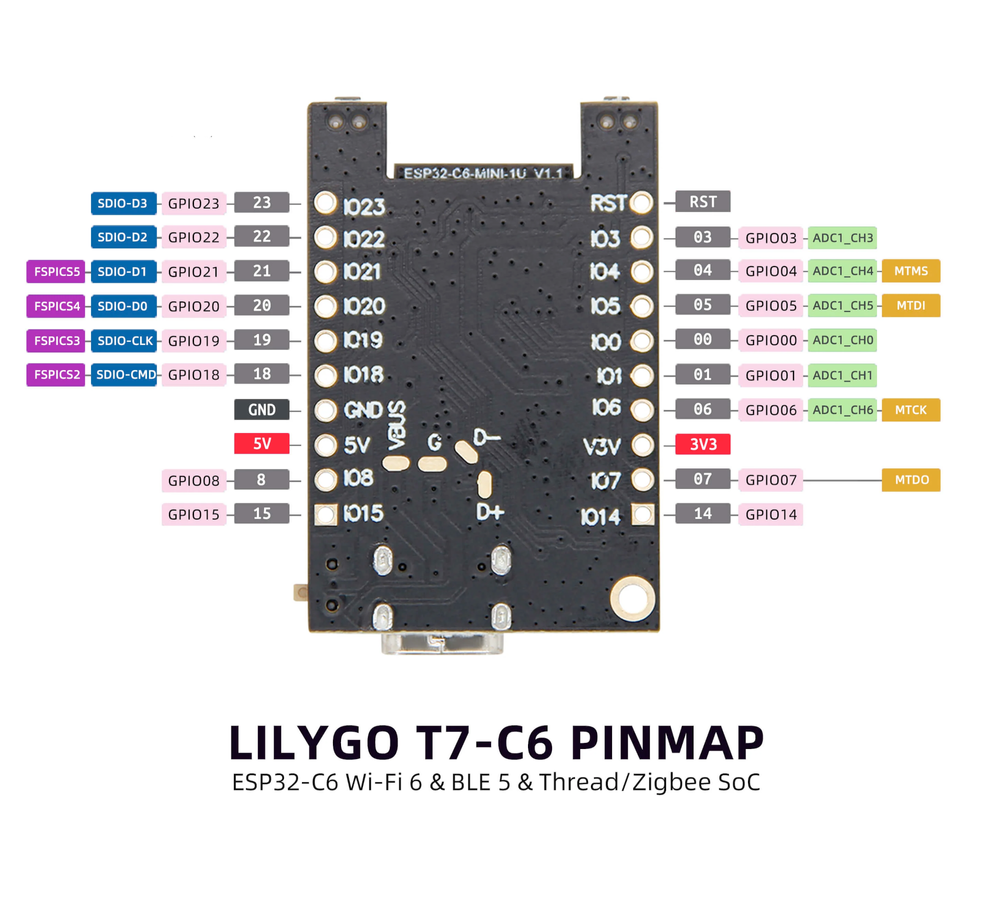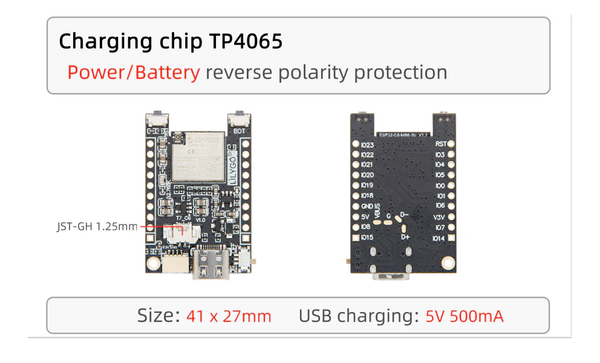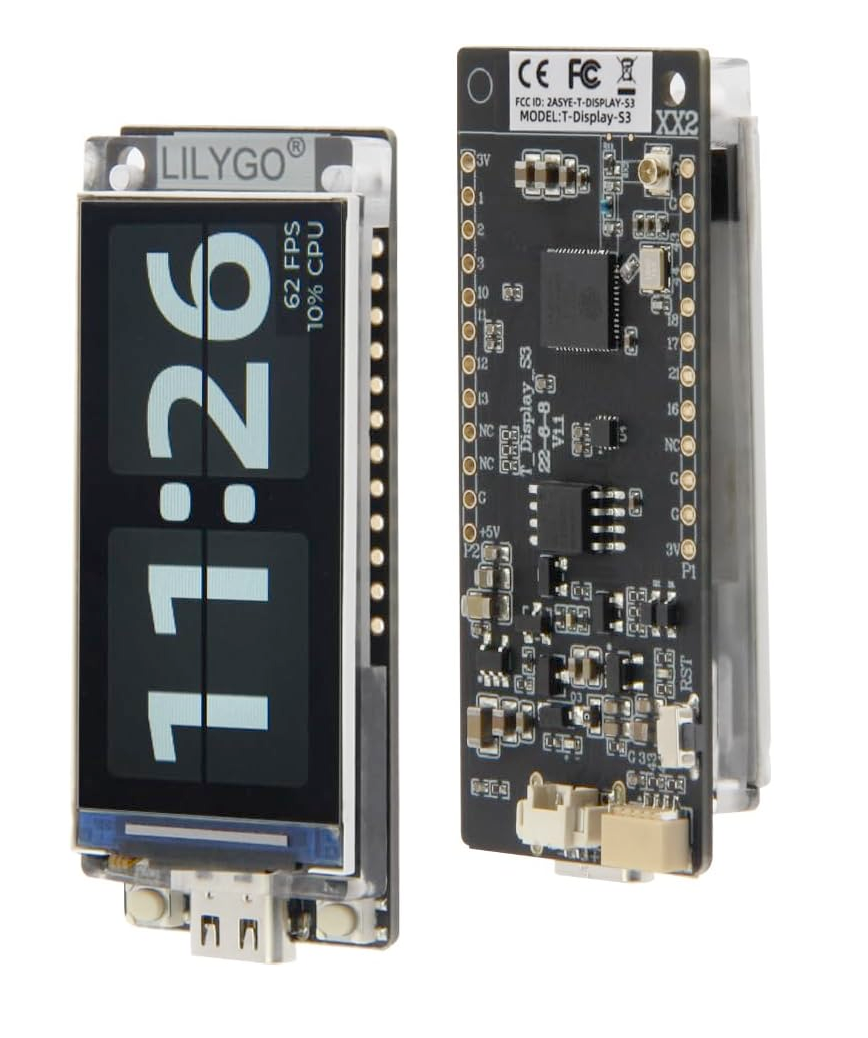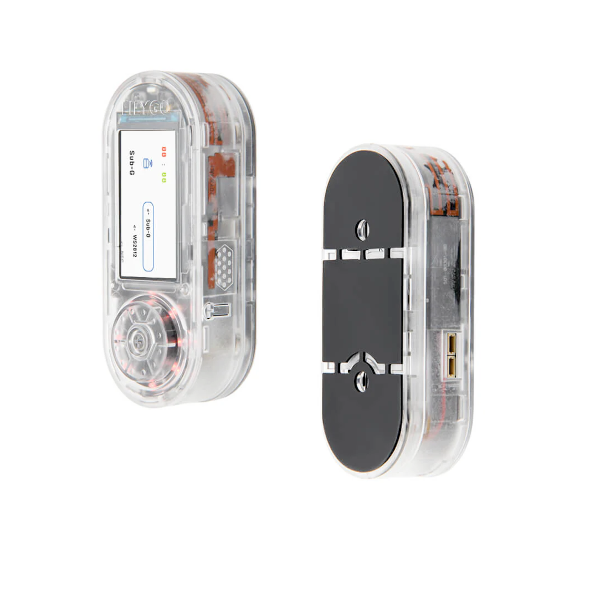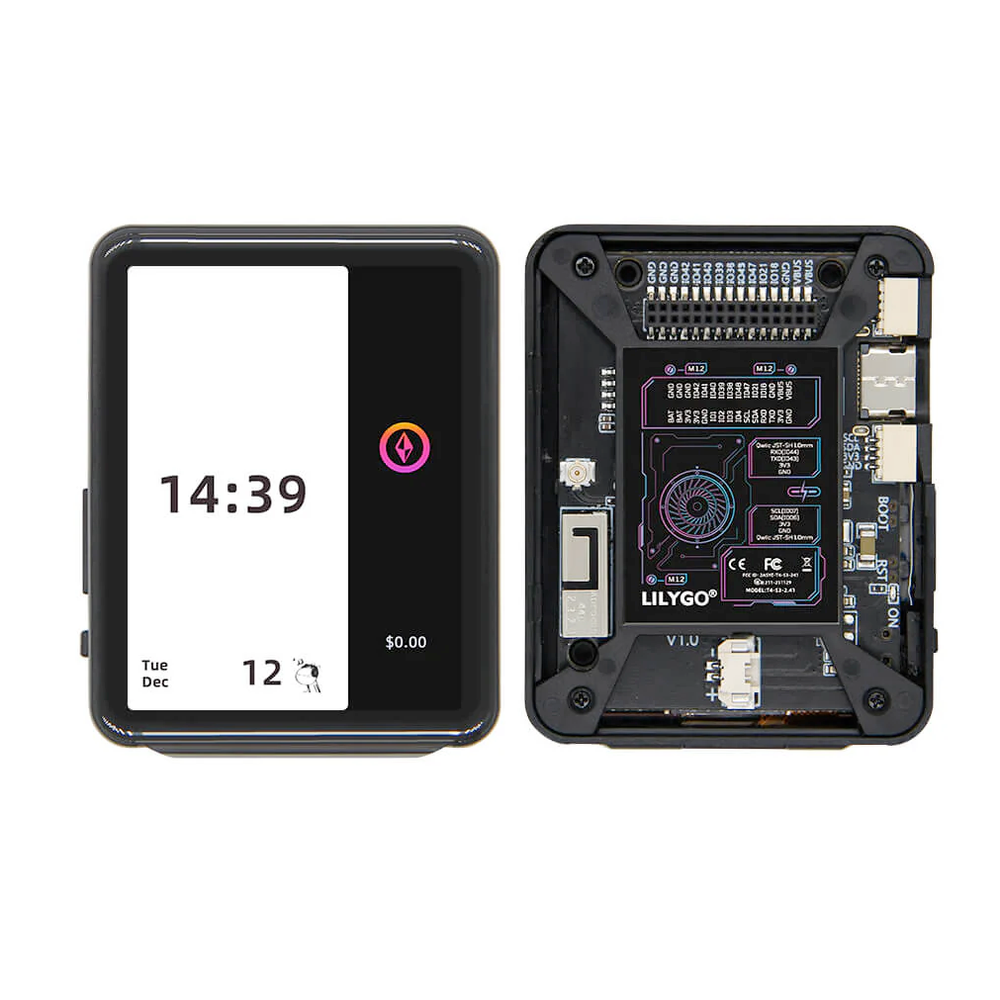LilyGO T7-C6 Development Board
Code name: T7_C6
LilyGO T7-C6 development board is based on esp32c6 microcontroller and uses riscv32 architecture. This board has a maximum CPU frequency of 160 MHz and a flash size of 8MB.
About LilyGO T7-C6
The LilyGO T7-C6 is a powerful development board featuring the ESP32-C6 RISC-V processor with support for WiFi 6, Bluetooth 5 (LE), and Zigbee. 📡
Designed for IoT and embedded applications, it includes a USB-C port for easy programming and power, onboard reset and boot buttons, and multiple I/O interfaces. ⚡
The LilyGO T7-C6 supports UART, I2C, SPI, and ADC interfaces, making it ideal for smart home automation, sensor networks, and energy-efficient applications.
LilyGO T7-C6 Technical Specifications
🔌 USB
🛰️ Connectivity
🧠 Microcontroller
✨ Features
- RISC-V ESP32-C6 processor with ultra-low power consumption
- Supports WiFi 6, Bluetooth 5 (LE), and Zigbee
- Compact design ideal for IoT and sensor applications
- USB-C for programming and power
- 13 digital IO pins
- 24 external interrupt pins
- 4 analog input pins
- 13 PWM pins
LilyGO T7-C6 Pinout
✅ Safe Pins to Use
For general GPIO usage, these are the safest and most flexible choices:
Why Are These Pins Safe?
- Not involved in bootstrapping → No impact on device boot mode or system startup
- Not linked to flash memory or PSRAM → Won't interfere with storage or memory access
- Not dedicated to USB or JTAG → Free for general use without affecting debugging
- No special hardware connections → Freely assignable without internal conflicts
⚠️ Pins to Avoid or Use with Caution
Some pins are reserved for critical functions like bootstrapping, JTAG debugging, USB communication, and flash memory operations. Misusing these pins may lead to boot failures, programming issues, USB conflicts, or disruptions in flash storage.
Critical Pin Categories:
- 🛠️ Strapping Pins: Control boot behavior and flash voltage selection
- 🔗 JTAG Debugging Pins: Required for low-level debugging
- 🔌 USB Communication Pins: Used for USB Serial/JTAG communication
- ⚡ Flash Memory & SPI Pins: Connected to SPI flash memory and PSRAM
- 📡 UART Serial Communication Pins: Used for debugging and firmware uploads
| PIN | Label | Reason | Function |
|---|---|---|---|
| IO4 | MTMS | Used during boot; required for JTAG debugging; flash data in internal-flash models. | 🛠️ Strapping |
| IO5 | MTDI | Used during boot; required for JTAG debugging; flash data in internal-flash models. | 🛠️ Strapping |
| IO6 | MTCK | Required for JTAG debugging; connected to flash clock in internal-flash models. | 🔗 JTAG |
| IO7 | MTDO | Required for JTAG debugging; connected to flash data in internal-flash models. | 🔗 JTAG |
| IO8 | GPIO8 | Determines boot mode; pulling low at reset can prevent normal boot. | 🛠️ Strapping |
LilyGO T7-C6 Pin Mappings
This development board provides 13 digital IO pins, out of which 24 can be used as external interrupt pins , 4 as analog input pins and 13 pins have Pulse-Width Modulation (PWM) .
| Pin | Function | ESP Pin | Input/Output | Description |
|---|---|---|---|---|
| 1 | 5V | 5V | POWER INPUT | 5V power input |
| 2 | GND | GND | GROUND | Ground connection |
| 3 | 3V3 | 3.3V | POWER OUTPUT | 3.3V power output |
| 4 | IO2 | A0 | BIDIRECTIONAL | GPIO, ADC |
| 5 | IO3 | A1 | BIDIRECTIONAL | GPIO, ADC |
| 6 | IO4 | A2 | BIDIRECTIONAL | GPIO, ADC |
| 7 | IO5 | A3 | BIDIRECTIONAL | GPIO, ADC |
| 8 | IO6 | SDA | BIDIRECTIONAL | GPIO, I2C Data |
| 9 | IO7 | SCL | BIDIRECTIONAL | GPIO, I2C Clock |
| 10 | IO8 | SCK | BIDIRECTIONAL | GPIO, SPI Clock |
| 11 | IO9 | MISO | BIDIRECTIONAL | GPIO, SPI Data |
| 12 | IO10 | MOSI | BIDIRECTIONAL | GPIO, SPI Data |
| 13 | IO20 | RX | BIDIRECTIONAL | GPIO, UART Receive |
| 14 | IO21 | TX | BIDIRECTIONAL | GPIO, UART Transmit |
Default Tools for LilyGO T7-C6
| Bootloader tool | esptool_py |
| Uploader tool | esptool_py |
| Network uploader tool | esp_ota |
| Bootloader address | 0x0 |
| Flash mode | qio |
| Boot mode | qio |
| Maximum upload size | 1920 Kb (1966080 B) |
| Maximum data size | 640 Kb (655360 B) |
The LilyGO T7-C6 development board by default uses esptool_py uploader tool, esp_ota network uploader tool for Over-the-air (OTA) uploads and esptool_py bootloader tool. The bootloader starts at address "0x0". Flash mode and boot mode for LilyGO T7-C6 development board by default is qio and qio respectively.
